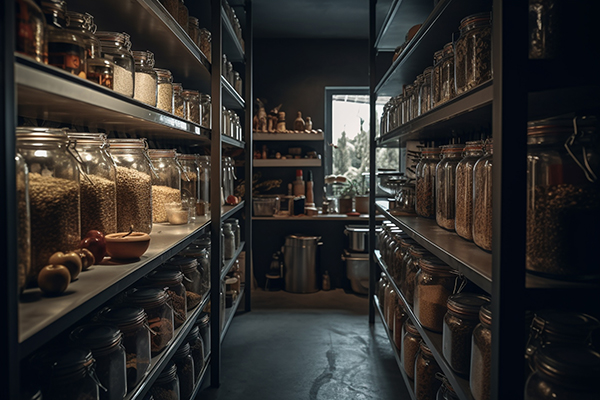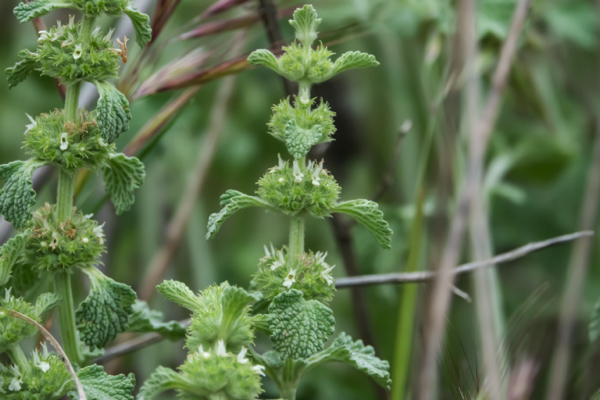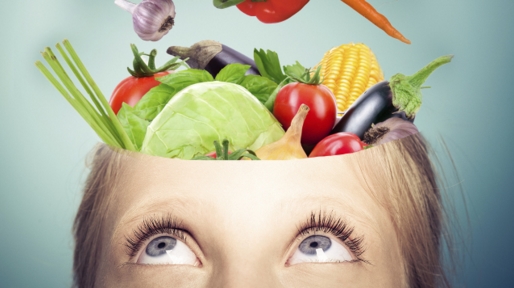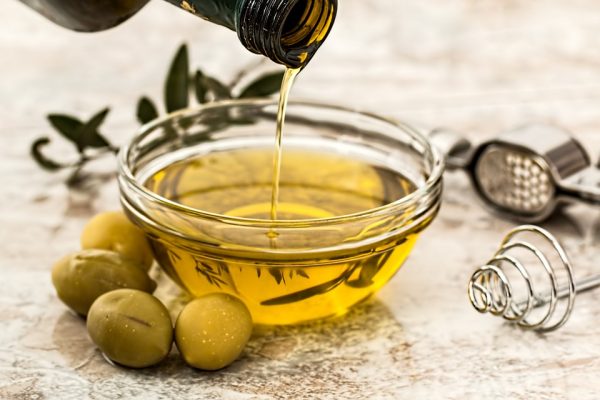How to avoid wasting food: Smart storage, planning and preservation tips
By zoeysky // 2025-04-17
Tweet
Share
Copy

- Track food using the "first in, first out" (FIFO) method. Place new groceries behind older ones to avoid spoilage. Plan weekly meals, shop with a list and check pantry stocks first to prevent overbuying.
- Keep perishables visible (use clear containers) and store foods correctly, like refrigerating berries but keeping potatoes in a cool, dark place. Maintain fridge/freezer temps (40 F and 0 F, respectively) to slow spoilage.
- Freeze aging produce, bread or leftovers for future smoothies, soups, or baked goods. Repurpose wilted veggies into soups or stir-fries and stale bread into croutons or breadcrumbs.
- Learn preservation (canning, pickling, or fermenting) to extend shelf life. Regrow scraps like green onion roots or celery ends. Compost unusable scraps (egg shells, coffee grounds) to cut landfill waste.
- Support local farmers’ markets for fresher items and use up leftovers before they expire. Small changes add up to big savings and less waste.
Get organized with the "first in, first out (FIFO)" method
Staying organized is the simplest way to prevent waste. How many times have you found something buried in the back of your fridge, only to realize it's now a science experiment with mold and a bad smell? Use the FIFO method and store newly purchased food behind older items so you use them first. Keep food visible by storing all perishables where you can see them. Avoid hidden corners and use clear containers as needed. Clearly label and date leftovers so you can quickly see which meals need to be eaten soonest.Plan meals and stick to a shopping list
Impulse buys and overstocking lead to waste. The solution? Plan ahead. Create a weekly meal plan based on what you already have. Make a detailed shopping list and stick to it. Buy groceries after you've eaten to avoid impulse-buying snacks. Always check your fridge and pantry before shopping to avoid duplicate purchases. You can also shop local farmers' markets for fresher produce that lasts longer.Store food the right way
Not everything lasts longer in the fridge. In fact, some foods spoil faster if stored incorrectly. (Related: Reduce food waste by refrigerating fruits and vegetables.) Refrigerate apples, berries and greens to extend their shelf life. Store tomatoes, potatoes, and onions at room temperature, but keep onions away from potatoes to prevent sprouting. You can keep herbs fresh longer by placing them in a glass of water, like a bouquet. Keep your fridge at 40 F (4 C) or below and the freezer at 0 F (-18 C) to prevent spoilage.Use your freezer to save nearly-spoiled food
Freeze aging produce or leftovers to extend their shelf life. If you have fruit that is going soft, freeze it for smoothies or baking. If bread is turning stale, freeze it for later toast or breadcrumbs. If you have too many vegetables left over, blanch and freeze them to be used for soups later. Vacuum-seal foods to prevent freezer burn.Get creative with leftovers
With a little creativity, "waste" can become a delicious meal. If you have stale bread, use it to make croutons, bread pudding or French toast. If there are wilted vegetables, use them to make soup, stir-fry or homemade stock. Leftover rice can be used for fried rice, casseroles or stuffed peppers.Learn food preservation techniques
Food preservation is a useful skill that can benefit modern homesteaders and preppers.- Canning – Turn ripe fruit into jams or sauces.
- Dehydrating – Make fruit leather or dried veggie chips.
- Fermenting – Sauerkraut, kimchi and kombucha reduce waste while boosting gut health.
- Pickling – Extend the life of cucumbers, carrots and eggs.
Regrow food from scraps
Did you know that you can replant kitchen scraps to grow more food?- Celery and bok choy ends – Replant in soil for a second harvest.
- Green onion roots – Place in water to regrow green onion.
- Potato eyes and garlic cloves – Plant potato eyes and garlic cloves to grow new crops.
Compost what you can't eat
Even with the best efforts, some scraps like eggshells, coffee grounds or wilted greens can’t be reused. Compost them instead of trashing them. Home composting feeds gardens and reduces landfill waste. If you have no space or use for compost, check if your city has a composting program. Reducing food waste doesn’t require drastic changes, just smarter shopping, better storage and creative meal planning. Whether you're a survivalist stocking up for emergencies or just trying to save money and eat fresher, these tips ensure nothing goes to waste. For more zero-waste recipes and sustainable living advice, visit NaturalNewsTips.com. You can also check out Health Ranger Store and Brighteon Store for more clean food supplies for your cooking needs. Watch the video below to find out how Organic Coconut Water and Aquamin can help you stay hydrated. This video is from the Health Ranger Store channel on Brighteon.com.More related stories:
Stock up on these long-term storable survival foods that you can grab at a grocery store. Reduce food waste by learning how to store fresh fruits and vegetables properly. Survival stockpile staples: Emergency foods for long-term storage. Waste not, want not: 10 ways to reduce food waste. Sources include: ApartmentPrepper.com Healthline.com Brighteon.comTweet
Share
Copy
Tagged Under:
Food storage nutrients prepping food supply food waste homesteading green living sustainable living fruits tips Off Grid living organics groceries Zero Waste veggie goodfood prepping tips
You Might Also Like
Maple syrup: Nature’s golden superfood and its sweet health benefits
By Laura Harris // Share
Innovation in plant-based nutrition: How vegan Vitamin D3 breaks industry norms
By HRS Editors // Share
Horehound: A resilient flowering plant and healing herb
By Ava Grace // Share
Pumpkin spice in spring? How to reimagine this fall classic for warmer days
By HRS Editors // Share
Can omega-3 fatty acids help kids with autism? The science says YES
By Olivia Cook // Share
Olive oil: A superfood source of antioxidants and heart-healthy fats
By Laura Harris // Share
Recent News
SpaceX emerges as frontrunner for Trump's Golden Dome missile shield
By isabelle // Share
Maple syrup: Nature’s golden superfood and its sweet health benefits
By lauraharris // Share










